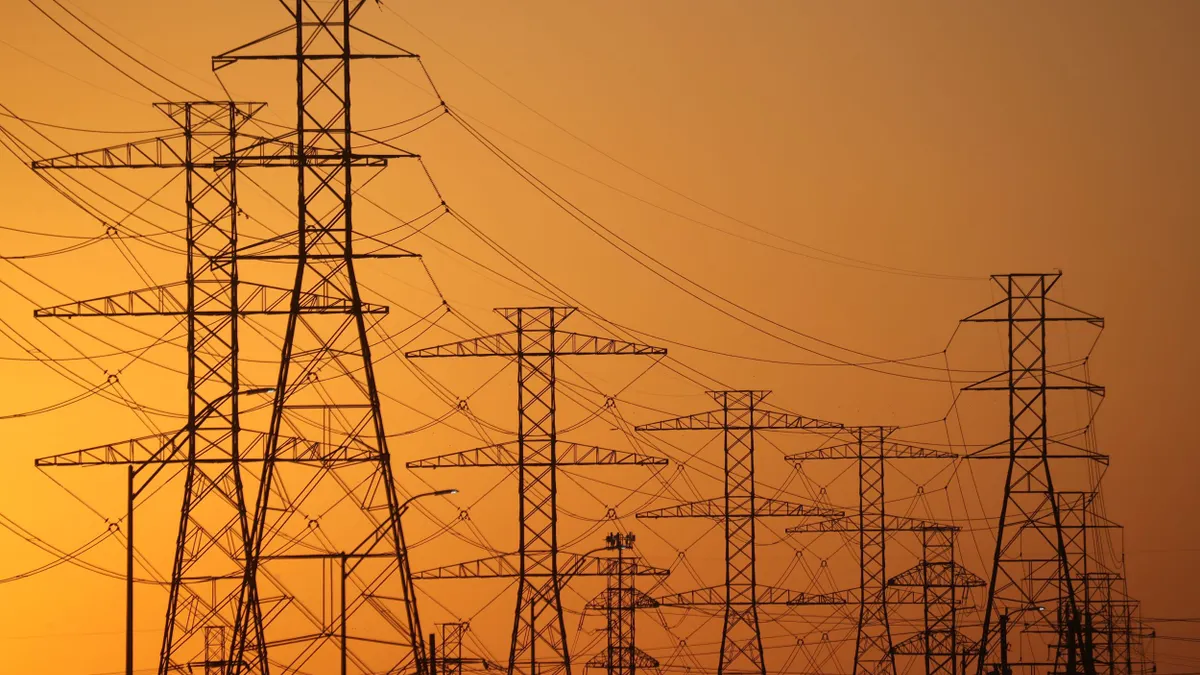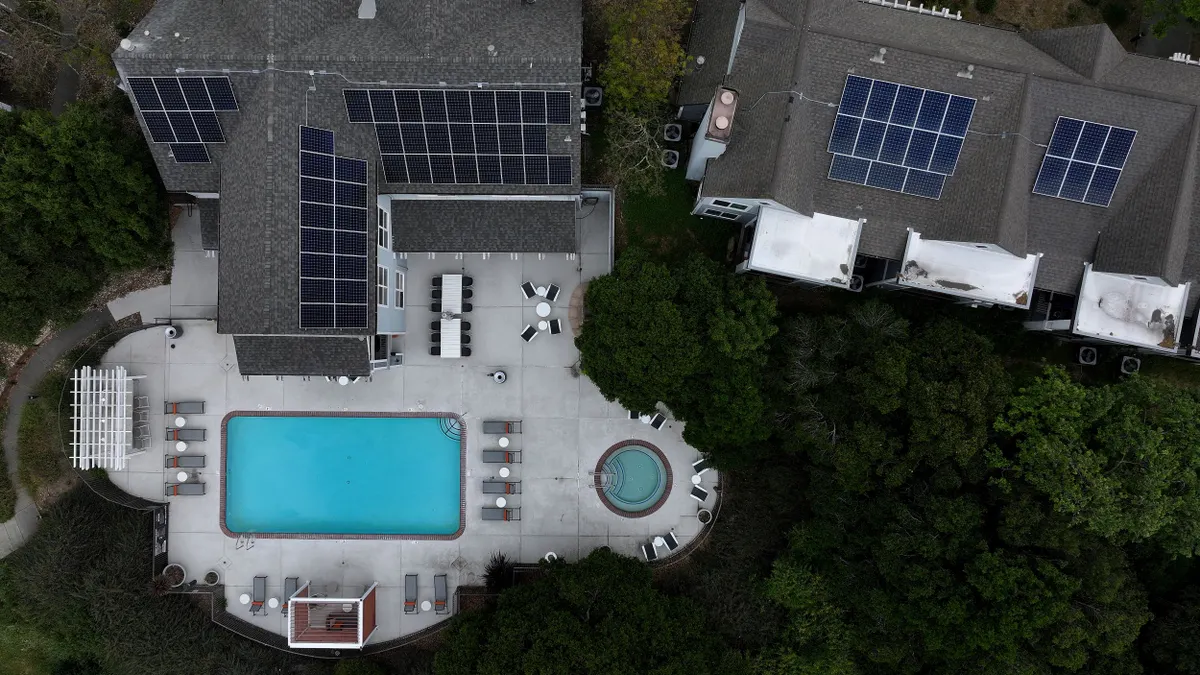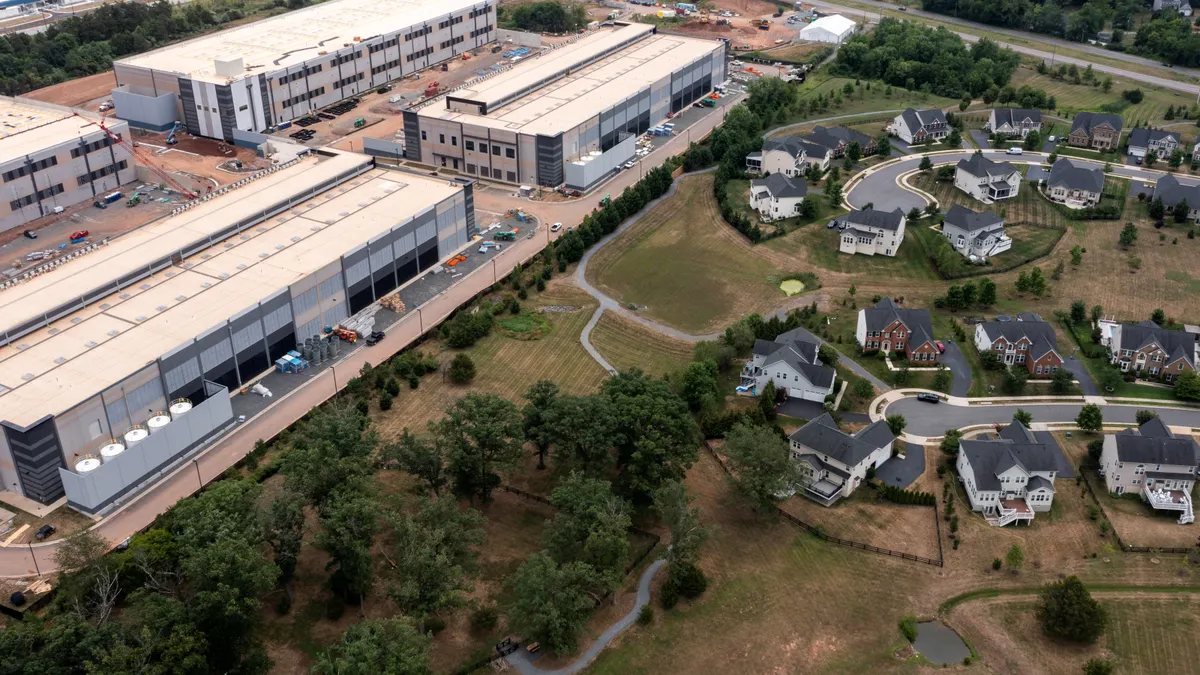Editor's Note: The following is the third installment in an ongoing Utility Dive series, "Diary of a Grid Defector." Each month, Utility Dive's Robert Walton will report on his adventures setting up an off-grid cabin and exploring developments in distributed energy in upstate New York. We hope his experiences will give our readers an insightful, first-hand look at what life is like at the edge of the electricity system—and how the revolution in distributed energy technologies is changing it. His first two installments can be found here and here.
I woke up to the sound of heavy footsteps in the woods, and some crazy breathing that seemed to be right next to me. First thought, after my heart stopped pounding: I may need better insulation.
It was just a deer, and living out here in the woods means I've gotten used to the noise of them crashing around in the night with their bizarre snorts and wheezes. But it probably shouldn't sound like they're in the room with me. Because this cabin is definitely not big enough. And now I'm wondering if it's going to be warm enough.
It's been a perfect summer here in the Finger Lakes region of New York, but you can feel attitudes beginning to shift. Winter is coming, and apparently that means something. People are getting ready. It still gets up to 70 degrees in the afternoon, but the mornings start in the 40s now, and so I've been wood-stove shopping and chopping logs like a madman.
It's been three months since I moved into this tiny cabin. A blur of projects and construction, just trying to get everything in place. I'm clearing out space for a garden – solar and vegetable – but at least one will have to wait until spring.
There's a festival here about every weekend it seems, as though people want to cram one last bit of summer in before the temperature drops for real. And so over Labor Day I headed over to the Grassroots Big Splash event in Hector, billed as a sustainability fair but in reality a good excuse to eat fried chicken and listen to local music.
The music was sponsored by solar installers and advocates, gas project opponents and wineries – a party for sure – but by the time I showed up, Donna the Buffalo was warming up and the energy talk was dying down. Tony Del Plato, manager of community group Solar Seneca, invited me out to the meeting so that I could see the sort of grass roots efforts solar boosters are using in the region.
The group gets a $5,000 grant from the state, the bulk of which goes towards yard signs and other communications. The goal is to double the number of solar systems in a four-town area – from 20 to 40. It's small-scale solar activism, growing one roof at a time.
Knowing your customer
One topic that keeps coming up lately is customer communication: how energy companies can get better and more targeted information to customers, offering them what they want explaining it in a way that makes sense.
Solar Seneca has partnered with four towns – Loid, Ovid, Romulus and Covert – whose boards determined they wanted to grow the amount of solar being used. Those four towns are rural, farming areas with a combined population below 9,000. Some 20 miles south on Highway 96, Solarize Tompkins, which includes the progressive college town of Ithaca (population: 30,500), holds its meetings in breweries and museums. But Solar Seneca takes a different approach, holding its outreach in small libraries, high school auditoriums and at the county farm bureau.
The Interlaken library sits at the corner of Main and Railroad Ave., across from a small farm museum and next to a gun refinisher. The solar informational meeting was held in the children's reading room, where about a dozen residents sat on folding metal chairs to hear Del Plato's talk.
He's a gregarious guy and he greets people as though he knows them, an easy habit as Del Plato owns a bed and breakfast just down the street with his wife. The two installed a solar hot water heating system for about $3,600, he tells the group assembled in the library. The cost would have been about $13,000, but they relied on a package of credits to reduce the expense to something manageable.
That's basically what the solar community meetings are all about: getting information into people's hands, and showing them that it isn't such a monumental decision. “This is something I can do for my community,” Del Plato says.
The meeting is targeted to the audience. Del Plato speaks for about 45 minutes, taking questions about keeping pests from nesting around the panels, array aesthetics and the ease of snow removal. He lays the heavier lifting off to “the installers,” who will eventually be tasked with explaining tiered credits, the intricacies of net metering and decisions on how to finance. The Solar Seneca meeting is just a first step. Del Plato is a retired chef and a clean power ambassador, but not actually a solar executive.
“When my wife and I got solar, we had four installers come out to do appraisals,” he tells the group. Part of it was, of course, getting a good quote. But Del Plato said he was also getting comfortable with the language, the ideas, having it explained multiple times.
An older couple in the front row throw several questions his way. They've got a farmhouse, upwards of 100 years old, and they're interested in installing panels. I stop them after the meeting, fascinated to know what tipped it for them, what got them interested in solar power.
They didn't want to give their name, but the answer was simple: “Our plumber got solar panels."
It's a perfect answer that touches back to the very purpose of the meetings, and reminds me of a Yale study from last year that examined how solar systems spread. Basically: A mix of peer pressure and reassurance. If your neighbor installs panels, there is a greater chance you will also.
Slash and burn
As a few kind Utility Dive readers pointed out, one way to increase my own solar energy production would be to cut down trees. A lot of them.
Looking ahead to next year, I want to get a garden in pretty early. So I've started clearing about 5,000 square feet of forest around the cabin, which has essentially helped double the energy I'm generating. Unfortunately, the chainsaw conked out the other day and so right now it looks more like a post-apocalyptic forestry film than a garden. But there's time.
And that may be the biggest change of the last three months — time. There's so much and so little. The projects, the things which need doing, they never stop. Ask any homeowner. But there's also no sense of urgency or rush. They'll get done. A large part of this shift is the move to a rural area. From D.C. to Hector is a big jump. But I also think the hard look I've been taking at the energy I use, the things I consume, what I need and what I don't, is having a real impact on the pace of life.
This winter will be a different beast, for sure. Thinking about heating this cabin, about the last two years of brutal winters, I still can't rule out just heading south for a few months. That damn deer. The only scary moment since I moved into the woods, and it was about insulation.
The editors of Utility Dive would love to hear feedback on this new series from you. Did you find Robert's dispatch interesting? Useful? Applicable to your job? Or maybe you simply have a tip for his new, off-grid lifestyle. Whatever it may be, send us an email at [email protected].






















